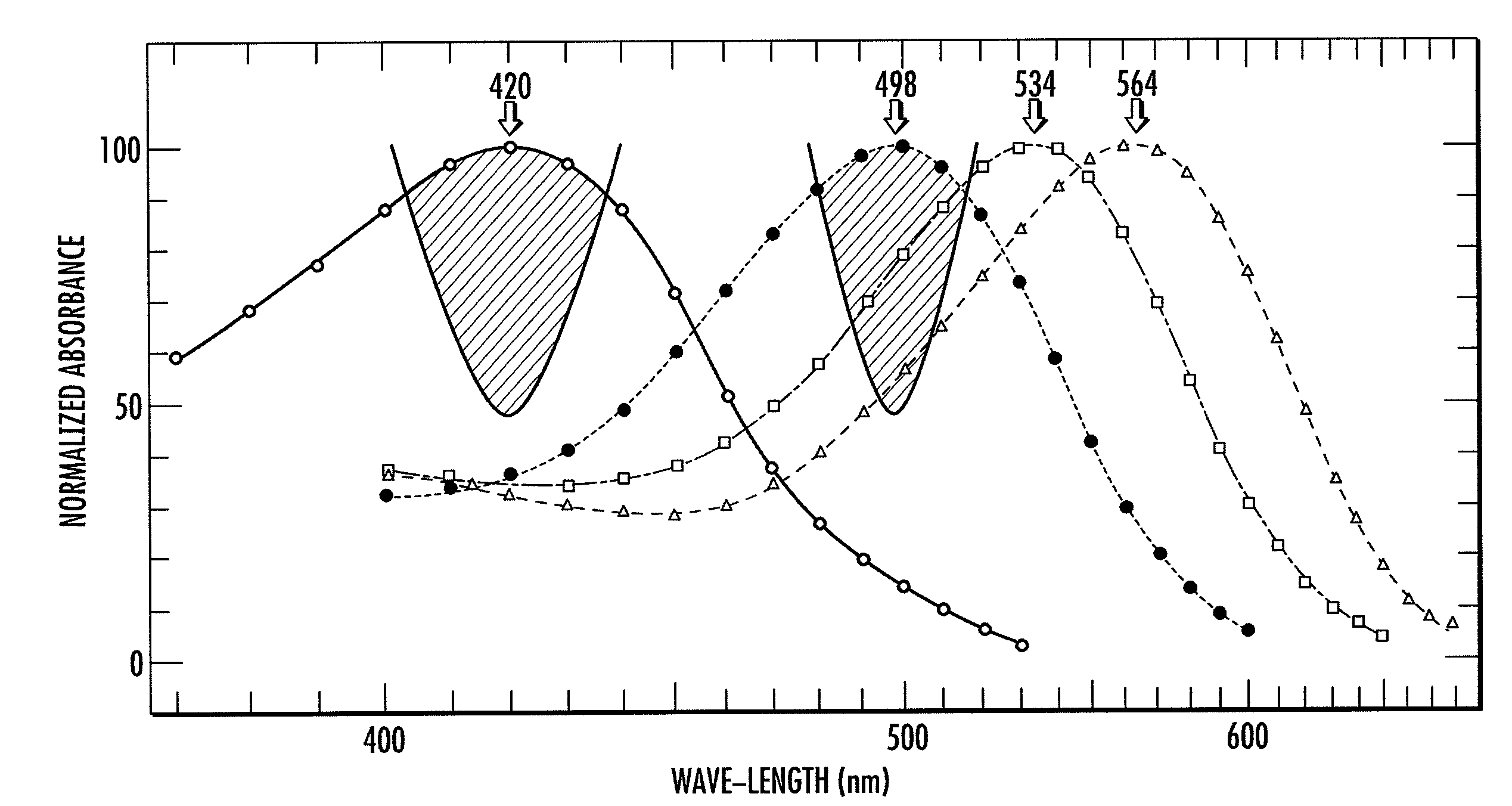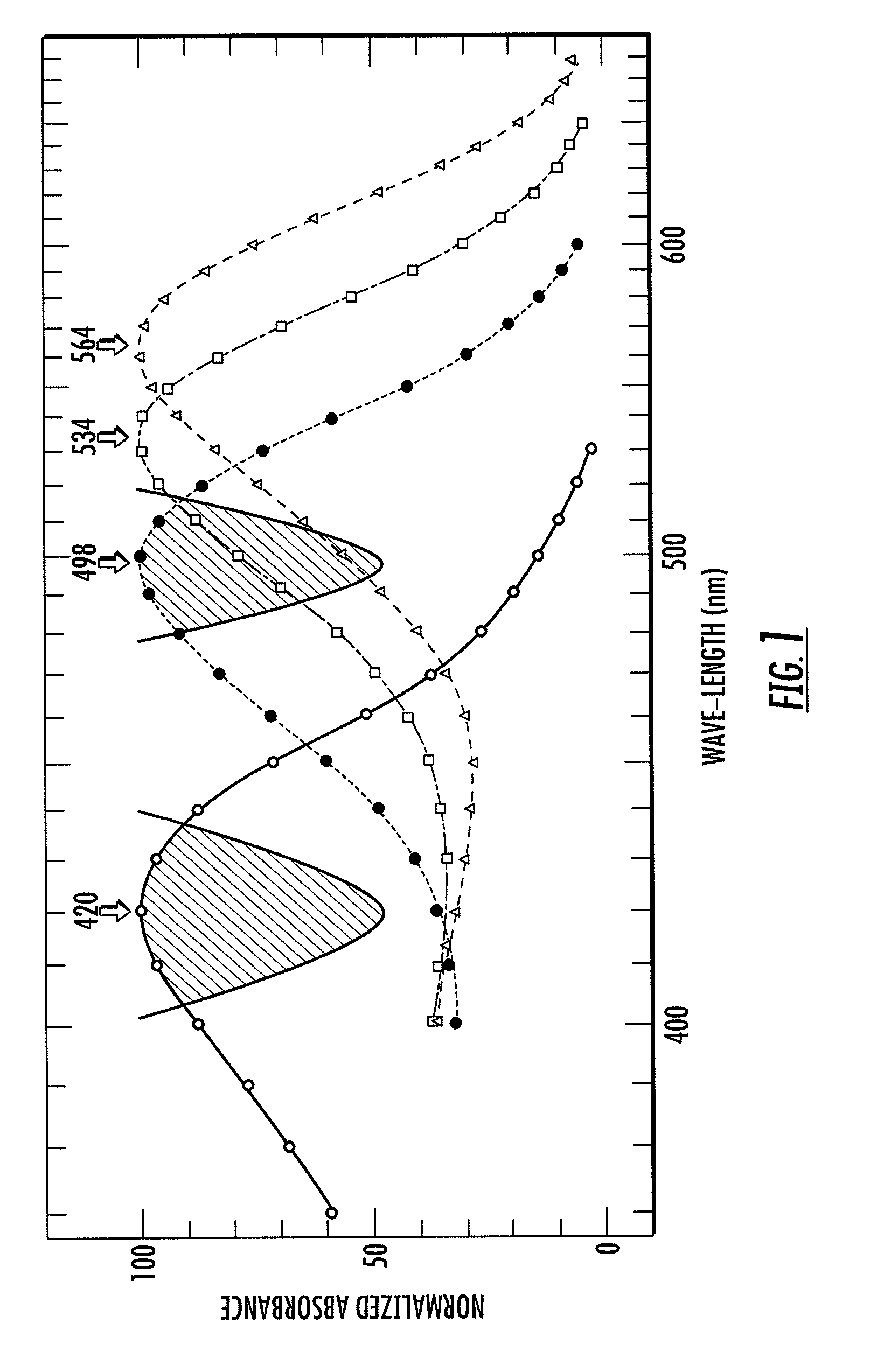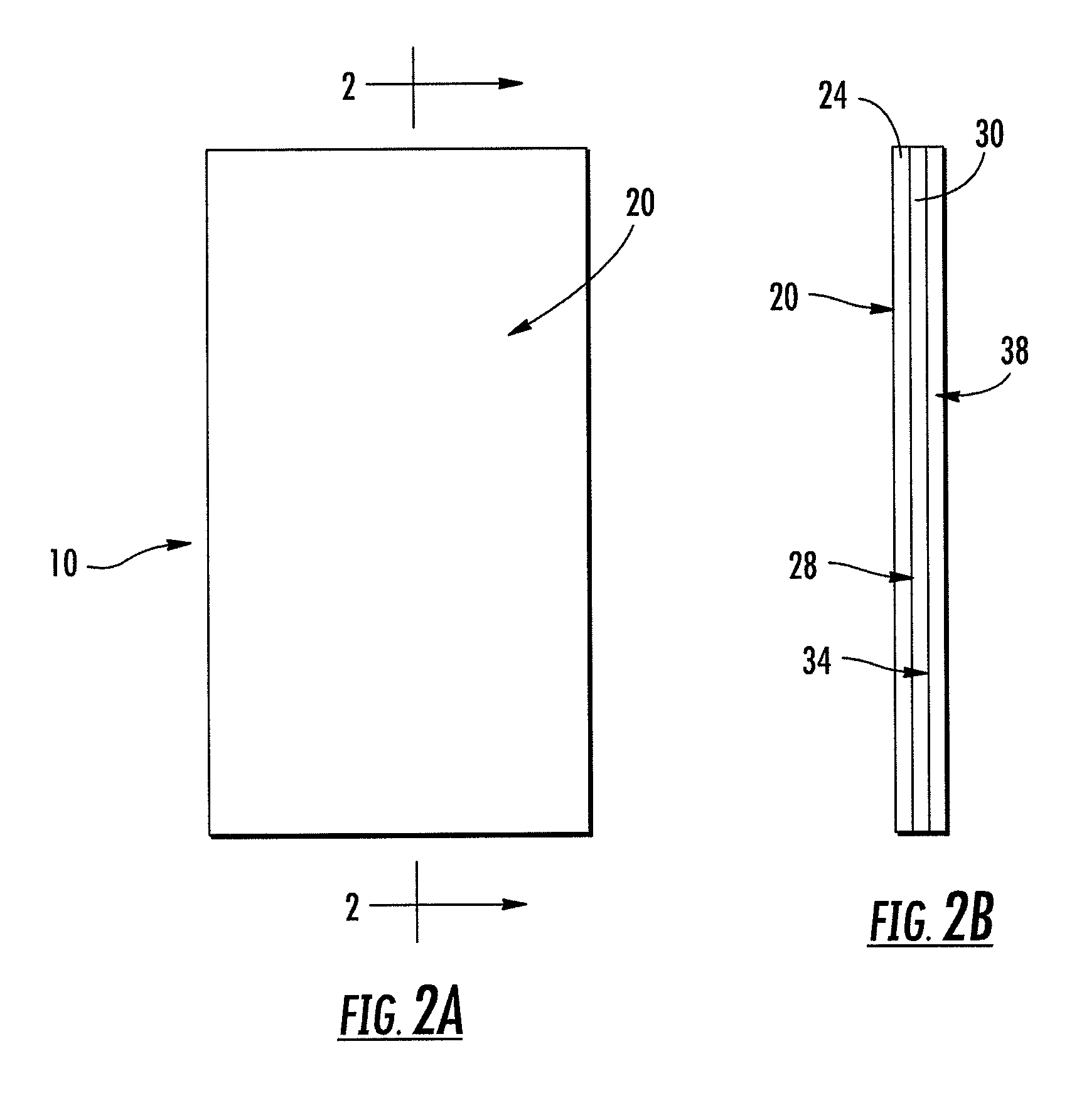Optical Filter for Selectively Blocking Light
a filter and selective technology, applied in the field of optical filters, can solve the problems of affecting the light intensity of the eye, and causing the retina to be bleached too easily under bright light, and causing unwanted and potentially, phototoxic biochemical reactions
- Summary
- Abstract
- Description
- Claims
- Application Information
AI Technical Summary
Benefits of technology
Problems solved by technology
Method used
Image
Examples
examples
[0053]An optical interference coating comprising a 14-layer TiO2 / SiO2 dielectric stack was created on a thin film software program (i.e., TFCalc 3.5.11 from Software Spectra, Inc.) commonly used by those skilled in the art. The thicknesses of the materials to be added on the thin film filter are provided in Table 1. More specifically, Table 1 lists the thickness of the layers from 1-14 using alternating depositions of both TIO2 and SIO2 materials. Deposition can be achieved by physical vapor deposition or other methods which are known to be readily understood by those skilled in the art.
TABLE 1Material thickness data for a 14-layer TiO2 / SiO2 dielectric stackLayerMaterialThickness (nm)1TIO210.112SIO2291.593TIO212.904SIO2205.725TIO213.346SIO2312.517TIO210.028SIO2124.399TIO210.1210SIO2325.9811TIO210.1712SIO2230.7713TIO214.6914SIO2125.12
[0054]The spectral reflectance diagram for the filter in the form of an optical interference coating described above (i.e., the 14-layer TiO2 / SiO2 diele...
PUM
 Login to View More
Login to View More Abstract
Description
Claims
Application Information
 Login to View More
Login to View More - R&D
- Intellectual Property
- Life Sciences
- Materials
- Tech Scout
- Unparalleled Data Quality
- Higher Quality Content
- 60% Fewer Hallucinations
Browse by: Latest US Patents, China's latest patents, Technical Efficacy Thesaurus, Application Domain, Technology Topic, Popular Technical Reports.
© 2025 PatSnap. All rights reserved.Legal|Privacy policy|Modern Slavery Act Transparency Statement|Sitemap|About US| Contact US: help@patsnap.com



